In light of recent nut contamination alerts, food businesses must be aware of the risks and complexities of the spice supply chain
Recent cases of spice contamination with peanut and almond protein in the US, Canada and UK will have reminded food businesses about the need to be sure that due care has been given to sourcing.
Spices merit particular attention as they are used in such a wide variety of foods, the implications of which were shown by the Sudan Red recall in 2005.
Spice supply chains are not all the same; some have stringent controls in place while others do not. Often the difference is closely correlated to whether a spice has been produced for export or domestic markets. UK food businesses may be exposing themselves to significant food safety and integrity risks if purchasing spices from less controlled supply chains.
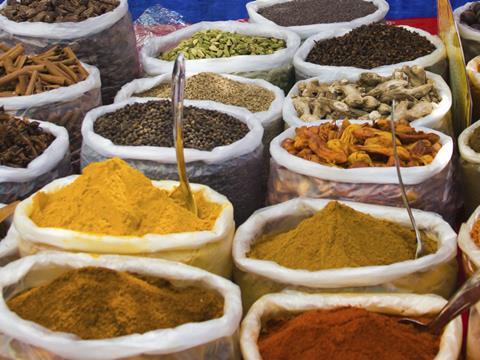
Characteristics of the world’s second oldest trade mean it is especially vulnerable to economically motivated adulteration and food safety issues. Spice supply chains are long, initial processing may occur in unhygienic conditions, and quality assessment is often based on organoleptic testing (subjective product examination using the human senses).
The risks are generally well understood but not all spice supply chains are equal, some have much more extensive risk management controls in place than others. The extent of the controls is influenced by the intended final customer, with spices for the export market subject to significantly more stringent controls than those intended for the domestic market.
The diagram (above) and table (below) provide a simplified overview of a generic spice supply chain and typical food safety and integrity risks and control measures. The diagram highlights that leakage from domestic to export supply chains can circumvent control measures on longer supply chains.
Food businesses purchasing spices from less controlled supply chains, intentionally or not, risk their reputation and their customers’ health. Ignorance will be no defence in law nor will it limit any brand damage.
Food businesses must investigate where and how spices are sourced, and the control measures in place to address food safety and integrity risks commonly associated with spice supply chains.
Eoghan Daly is policy and technical advisor for food at The Institute of Food Safety, Integrity and Protection (TiFSiP)
| Supply chain characteristic & risk | Appropriate control measure |
|---|---|
| Spice supply chains are often long and include many stages | |
| Spices often produced by subsistence farmers with small plots of land. On-farm technical expertise may be low, e.g. correct pesticide application procedures, often limited. Risk 1: chemical contamination. Agents / brokers aggregate products from a large number of farmers. Products pass through several middlemen before processing and / or export. Risk 2: product adulteration. |
Control 1: short and / or vertically integrated supply chains. Control outcome: Sight of on-farm practices. Control outcome: Fewer adulteration opportunities. |
| Spices are typically dried on or near farms | |
| Spices may be dried in the open in conditions that do not exclude farm animals. Risk 3: microbiological contamination, e.g. E coli and Salmonella, and foreign objects. Spices may be produced, dried, stored, and / or ground in proximity to other products. Risk 4: cross-contamination between spices / other products including allergens. |
Control 2: steam sterilization and irradiation of spices, mechanical sorting. Control outcome: Destroys microbial pathogens. Control outcome: Removes foreign objects. |
| Spice quality is often determined by organoleptic testing | |
| Spice quality often assessed on organoleptic characteristics, characteristics vulnerable to fraud. Risk 5: chemical contamination, undeclared ingredients, bulking agents. |
Control 3: analytical techniques, e.g. ELISA, DNA profiling. Control outcome: Ensures products meet agreed specifications and are free of undeclared ingredients. |







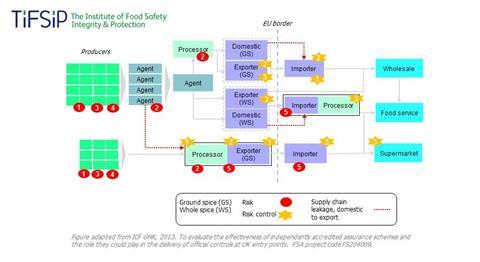


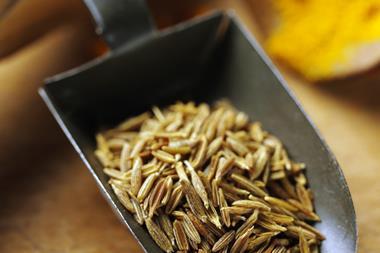
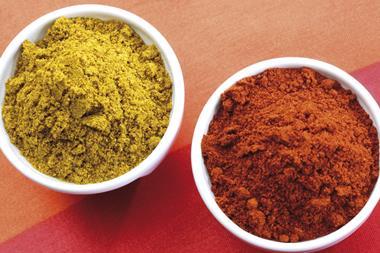
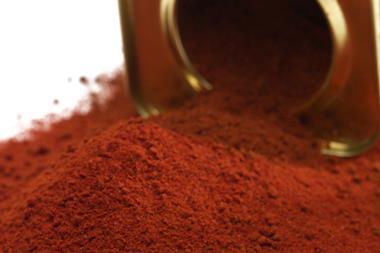







No comments yet